Notes from Town and Country
From Hazel, Highbury, 16 June 2020
With the latest easing of travel restrictions, there’s a lot of talk of public transport and who should use it, which in London mainly means the tube. When we first moved here in the early 1970s the Victoria Line from Walthamstow to Brixton via Highbury and Islington had only recently been built, and this brought with it the first of the estate agents who arrived to cash in on an area full of elderly residents easily persuaded to move out of their crumbling Georgian and Victorian properties and sell them to people like us.
I think my dislike of the tube dates from that time, for the Victoria Line trains, like most others, were bone-shaking and noisy and horribly inclined to stop suddenly in tunnels, and I have never liked the feeling of being underground. Even when they were eventually updated in 2009, they came with an initial glitch that meant the train screeched to a halt if anyone put a bag or a foot too near the door and stayed there until the obstacle was removed – this at a time when the horrors of the 2005 Underground bombings were still fresh in everyone’s mind. Nowadays the Victoria Line is fast and smooth, and the tube is undoubtedly the most efficient way of getting about London, but I can’t say I’m looking forward to travelling on it again.
What I am missing though is the little overground train on what used to be called the North London Line, one of the few direct ways of getting across London from East to West. The line has a rich and complex history, starting with a burst of Victorian confidence in 1850, but when we first discovered it in the 1970s it had definitely become a poor relation, a neglected little service that rattled its way from the now closed Victorian station at Broad Street (32 steps from platform to street), behind the back gardens of Canonbury and Highbury, through the backstreets of Camden Town, past bits of Hampstead Heath and the red-brick terraces of West Hampstead to Kew Gardens and Richmond. I think the trains must have been louder then because I remember sometimes hearing the rattle of a train as I lay in bed – someone once told me that a sealed train carrying nuclear waste travelled along the line at dead of night. I’ve no idea if that was true, but it made me think of the sealed train that carried Lenin to Russia from exile in Switzerland in 1917. There was something secret, almost clandestine, about the line, and indeed at the time it was described as ‘the line where you could always get a seat’.
In the BBC archive I discovered a splendid video, made in 1981, when the line was still run by British Rail. By that time, thanks to a small band of supporters, it had somehow survived the Beeching axe and under pressure BR had continued to keep it going by the simple expedient of spending no money on it at all, as pointed out in a classic interview with a breathtakingly complacent BR executive looking and sounding disconcertingly like the late Lord Home. People by this time were starting to complain about the desperate service, the filthy rundown condition of the stations and the failure of BR to promote the line, and a forceful man in horn-rimmed glasses from a roads lobby was putting the case for turning the track into a road. Lord Home’s lookalike was prepared to concede that ‘one can always find new people who’ve not heard of the line’, but BR had done their best, he insisted, by cutting costs, reducing the stations to a simple ticket office and ‘a bus shelter type building’ – something I well remember from cold, wet winter days.
And so the little line tottered on until its fortunes changed in anticipation of the 2012 Olympics when it was taken over by Transport for London. Now it is part of a brilliant overground network that also takes you through Docklands, south of the Thames to Rotherhithe and beyond, and far into the northern suburbs. The trains run on time and Canonbury, our cosy local station, has working lifts and a proper waiting-room where you can drink your latte or your cappuccino from the chic coffee stall on the platform. It is all very different from the days when I first knew it, but for me travelling on it still has the same romance, the sense of being privy to a secret world of back gardens and washing lines and children’s swings, familiar streets seen strangely from unfamiliar angles and overgrown sidings where nature has taken over amid the urban sprawl.
From the geyser ventilators
Autumn winds are blowing down
On a thousand businesswomen
Having baths in Camden Town . . .Early nip of changeful autumn
Dahlias glimpsed through garden doors
At the back precarious bathrooms
Jutting out from upper floors . . .
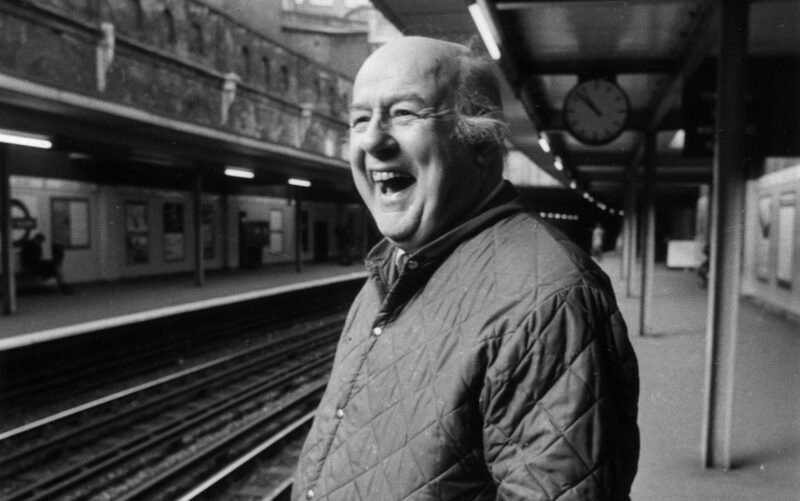
I think John Betjeman would be pleased to see what’s happened to the North London Line. I hope by the autumn I’ll be able to travel on it again.
From Gail, Manaton, 16 June 2020
Early one evening last week, when the sun was still shining, we wandered with the dogs down to the orchard to see how the apple trees were getting on, following an ancient track that runs along a huge granite dry stone wall, nearly six feet high, a good yard across, and covered in sedums and moss and lichen. It was built by French prisoners-of-war from Princeton during the Napoleonic Wars. What a job it must have been, clearing the fields and manoeuvring the stones into place. Some of those in our wall weigh well over a ton, as we discovered when a local farmer, delivering manure, clipped the gateway with his tractor and brought down a tumble of boulders.
In the orchard we found that the fruit has set, and it looks as if we might have a bumper crop. Perhaps I should take the plunge, after all, and make cider. But apples are not the only thing flourishing down there. Dozens of foxgloves were out, springing from crevices in the wall.
They reminded me of the foxgloves painted by Beatrix Potter which appear by a stile that Lucie clambers over in The Tale of Mrs Tiggywinkle, and again in The Tale of Jemima Puddleduck.
Jemima alighted rather heavily, and began to waddle about in search of a convenient dry nesting place. She rather fancied a tree-stump amongst some tall fox-gloves.
But – seated upon the stump, she was startled to find an elegantly dressed gentleman reading a newspaper.
He had black prick ears and sandy coloured whiskers . . .
Poor Jemima. She is saved from becoming roast duck by a collie, but she loses all her eggs. We have a whiskered gentleman of our own down here but the mallards on the lake are cannier than Jemima.
Talk of foxes and foxgloves reminds me of an image by Simon Dorrell which appeared on the cover of SF no.14. Since he drew that for us Simon has exhibited at Glyndebourne, alongside David Hockney and Mary Fedden, and in New York and Zurich, as well as all over the UK. He’s also a garden designer, and the architect of the beautiful garden at Bryan’s Ground near Presteigne, a magical place that I’d love to revisit when lockdown eases.
For now I’ll have to be content with our own much more modest garden, weather permitting. Unfortunately, at the moment the weather does not permit. The day after our orchard stroll it began to rain, and when it rains on Dartmoor, it rains a lot. We woke to the sound of drumming on the roof and a steady drip-drip from the eaves. As I splashed my way along the path to the greenhouse to pick radishes for lunch I felt like another of Beatrix Potter’s characters, Mr Jeremy Fisher, slip-slopping to his larder.
From Mark, by the banks of the Severn, 16 June 2020
What a change in the weather. It was cold standing in the lane yesterday to let a herd of cows be driven past by the farmer’s son on his quad bike. Two days before, we had walked in baking sunshine along the right bank of the Severn as two hares started up from the grass just in front. One turned away from the river and took cover in the hedge; the other, darting into the rushes twenty yards ahead, popped out again as we got near and did the same twice more.
By now we were following the wide loop around a twenty-acre meadow where no one else walks. A dozen shelducks took off from the reeds and wheeled left to land safely in mid-river while two oystercatchers stayed warily on the mud flats below their nest. Beside the sixty or so cattle in the field were two dozen Canada geese, necks vertical to observe us, keeping their distance and honking quietly in a precautionary manner. Far out in the centre of the meadow, a lone fawn stood up nervously and watched until we were out of sight. What was he doing there in broad daylight, miles from the forest or any other tree cover; was he sick or lost?
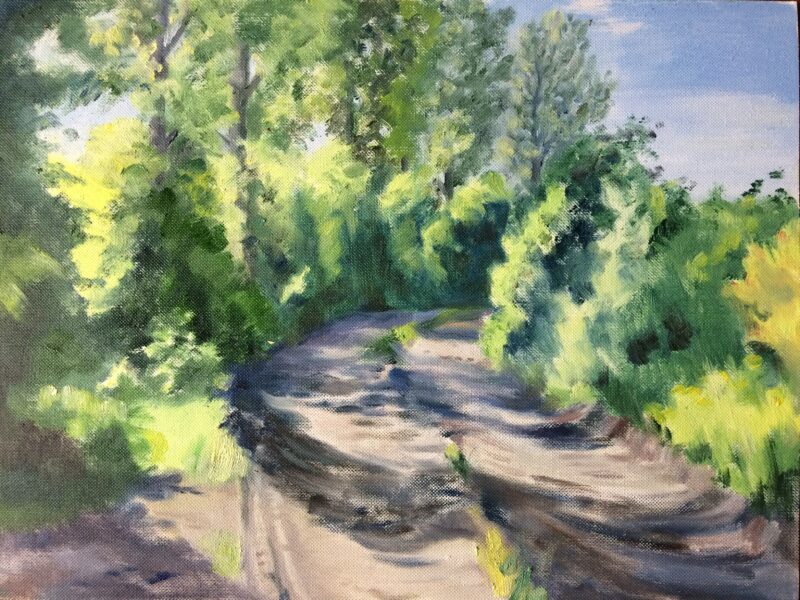
But yesterday, as we walked on up the lane in the cooler weather, my wife resumed her recapitulation of Wolf Hall and led on (Gail as a retired NHS consultant has something of a fixation with hygiene) to speculate on the flavour and condition of Henry VIII’s codpiece.* She followed this, as we climbed the hill, with a monologue on native American mythology and their respect for nature. Now, it is perfectly easy and much quicker to walk along the bottom of the hill but it is ‘better for us’ to climb over and down the other side although the narrow path across the top is obstructed by an overgrown briar hedge on one side and a vicious patch of hawthorn on the other. But, lo, Gail has brought secateurs and, while I am trying to cut my way out of the tangle, bleeding in six places, in danger of losing both hearing aids and being attacked from behind by the brambles hooked into my trouser legs, I can hear Gail who, more flexible than me, has ducked underneath and is now five yards clear, saying, ‘There is no need to snip any more there – come here and trim this bit.’ My late father-in-law had a solution to his wife’s bossiness. While pruning wisteria under her supervision he had once severed the telephone cable; after that he had only to remark, ‘When Jane says cut, you cut.’
*Not to be confused with the Slightly Foxed Gail.
When we got home, Gail had me up and down a ladder hanging bunting across the drive, ‘to cheer the place up’. She had sewn this with scraps left over from our cancelled village pantomime; plain green from the beanstalk, red with white polka dots and yellow with a red check from tree trunks. Repurposed as miniature shirts and bikinis they make a colourful cross between bunting and a teddy bear’s clothes-line. But, oh, the number of times up and down that ladder to get them hanging just right, evenly and high enough not to be snagged by the loftiest delivery van.






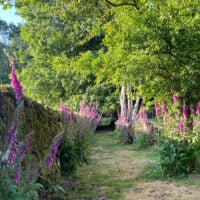
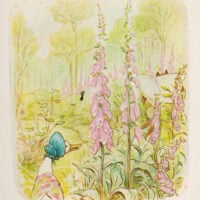
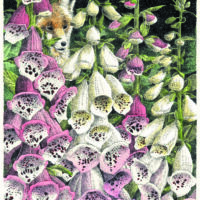
Loved Hazel’s diary piece about the North London Line. It made me feel very nostalgic about my years as a single parent living in Gospel Oak. The overground station (tatty as it was in the 70s) was a lifeline: as we went to Hampstead Heath one way, or Camden Road the other, we made up stories about the intriguing views of back gardens and the people we thought might be living in the houses. When my son was a bit older he and his friends went to Highbury and Islington for Arsenal matches. Sometimes we even went as far as Finchley Road and Frognal to see our friend in West Hampstead! Much later, as a grandparent, I was delighted to discover, as Hazel mentioned, that we could go as far as Kew.
An excellent book on the fall and rise of the North London Line is A Very Political Railway by Wayne Asher, published by Capital Transport in 2014. Very readable, it documents the long decline and the political manoeuvrings of the state to get to a point to be able to close the line, almost imperceptibly. Following that, Asher describes the various incremental improvements made to get passenger numbers rising to a point, where TFL assumed operation and modernisation in preparation for the 2012 Olympic Games was inevitable. Well recommended, as is a ride on the line.